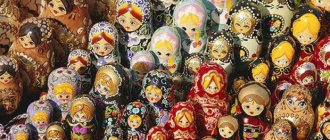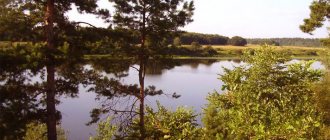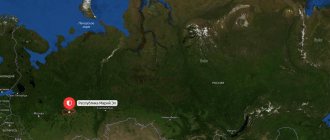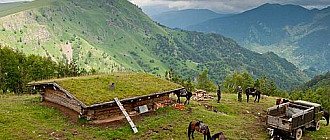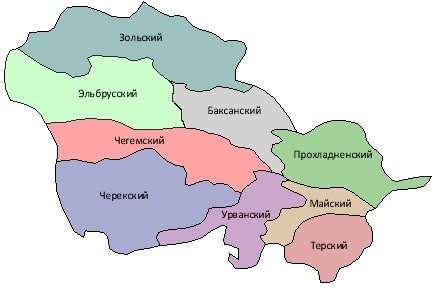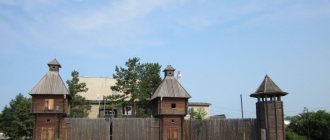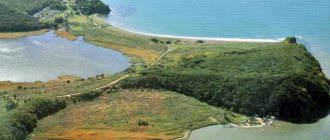What holiday is it today?
February 10, 2022, Thursday
Today are holidays, events: Diplomat's Day Tomorrow: World Sick Day Discovery of insulin
Today is the Orthodox holiday: St. Ephraim the Syrian. Venerable Ephraim of Novotorzhsky. Venerable Ephraim of Pechersk, Bishop of Pereyaslavl. Venerable Theodosius of Totem, Spasosumorin of the monastery, leader and founder... Tomorrow: Transfer of the relics of the holy martyr Ignatius the God-Bearer. Saints Gerasim, Pitirim, Jonah, bishops of Great Perm, Ustva...
Today is a national holiday: Ephraim's Day... Tomorrow: Lawrence's Day
Seasons
Seasons, four periods of the year (spring, summer, autumn and winter) characterized by certain average temperatures. The period during which the Sun passes through one of these sectors is called the season. Spring in the Northern Hemisphere and autumn in the Southern Hemisphere begin when the Sun passes through the initial circle of declination and its right ascension is 0° (vernal equinox). Summer in the Northern Hemisphere and winter in the Southern Hemisphere occur when the sun's right ascension is 90° (summer solstice). Autumn in the Northern Hemisphere and spring in the Southern Hemisphere begin when the sun's right ascension is 180° (autumnal equinox). The beginning of winter in the Northern Hemisphere and summer in the Southern Hemisphere is considered to be the winter solstice, when the direct ascension of the Sun is 270°... Next: Seasons. Russian folk calendar. Monthly words...
see also
- Mordovia
- Cities of Russia
| [ + ] Cities by regions of Russia | |
| Cities of the North-West (NWFD) | St. Petersburg (and its cities) • Leningrad region (historical Staraya Ladoga) • Arkhangelsk region • Vologda region • Kaliningrad region • Karelia • Komi • Murmansk region • Nenets Autonomous Okrug • Pskov region |
| Cities of the Volga region (Volga Federal District) | Bashkortostan • Volgograd region • Kalmykia • Kirov region • Mari El • Mordovia • Nizhny Novgorod region • Orenburg region • Penza region • Perm region • Samara region • Saratov region • Tatarstan • Udmurtia • Ulyanovsk region • Chuvashia |
| Cities of Southern Russia (SFD) | Sevastopol (including Inkerman) • Republic of Crimea • Adygea • Astrakhan region • Krasnodar region • Rostov region |
| Cities of the North Caucasus (NCFD) | Dagestan • Ingushetia • Kabardino-Balkaria • Karachay-Cherkessia • North Ossetia - Alania • Stavropol Territory • Chechen Republic |
| Cities of the Urals (Ural Federal District) | Kurgan region • Sverdlovsk region • Tyumen region • Khanty-Mansi Autonomous Okrug - Yugra • Chelyabinsk region • Yamalo-Nenets Autonomous Okrug |
| Cities of Siberia (Siberian Federal District) | Altai Republic • Altai Territory • Irkutsk Region • Kemerovo Region • Krasnoyarsk Region • Novgorod Region • Novosibirsk Region • Omsk Region • Tomsk Region • Tyva • Khakassia |
| Cities of the Far East (FEFD) | Amur Region • Buryatia • Jewish Autonomous Region • Trans-Baikal Territory • Kamchatka Territory • Magadan Region • Primorsky Territory • Sakha (Yakutia) • Sakhalin Region • Khabarovsk Territory • Chukotka Autonomous Region |
| see also | Cities of the DPR, LPR, Transnistria, South Ossetia • Regions of Russia • Cities of Russia |
Folk calendar about every day
Every day one season always replaces another and this determines a person’s way of life. In connection with this, a folk calendar was formed in which there were practically no nameless, unmarked days. Every day was special, had its own purpose. All this was determined by climate conditions and astrological phenomena.
A calendar is a system for counting periods of time. The first calendars arose a long time ago, in ancient times, because there was a need to measure time. The word calendar comes from the Latin words caleo - to proclaim and calendarium - debt book. This is due to the fact that in Ancient Rome the beginning of each month was especially proclaimed, and because it was customary to pay debts on the first day of the month. Different peoples counted time differently. Some calendars are based on the changing phases of the moon - lunar calendars; in others - the change of seasons - sunny; in others, the length of the year was coordinated with the change of seasons, and the counting of months was associated with the phases of the Moon. Such calendars are called lunisolar.
In Rus', the calendar was called a monthly calendar. Every day, the month book covered the entire year of peasant life, “describing” day by day, month after month, where each day had its own holidays or weekdays, customs and superstitions, traditions and rituals, natural signs and phenomena. The cyclical nature of the calendar is reminiscent of human life, where spring is youth, summer is heyday, autumn is the time of harvesting fruits (it’s good if there are some, otherwise you can live your life without collecting fruits), winter is the time of wisdom and peace. This cyclicality and rhythm determined the way of life of the farmer. The folk calendar was an agricultural calendar, which was reflected in the names of the months, folk signs, rituals and customs. Even the determination of the timing and duration of the seasons is associated with real climatic conditions. Hence the discrepancy between the names of the months in different areas... Next: Folk calendar...
Cities and villages
Saransk
The capital of the republic and one of the host cities of the World Cup, held in the summer of 2022, Saransk is famous for its well-established infrastructure. It has repeatedly been included in the top six most favorable and safe Russian cities for living. According to statistics, even the number of crimes committed here is half as frequent as in other cities of the Russian Federation.
All the most important things you can see in Saransk in 1 day.
The first mention of Saransk dates back to 1641, and its population in 2022 reaches about 319 thousand people. In 1670, the Saransk fortress was captured by an army led by Stepan Razin, and in July 1774, the peasant leader Emelyan Pugachev stayed in the settlement, who rebelled against the imperial power.
Saransk acquired the status of a city only in 1780, and in 1785 the Russian ruler Catherine the Second issued a decree on the reconstruction of the city, as a result of which most of the ancient buildings were demolished and new streets were formed.
Among the places worth seeing in this city are the following.
- The “Star of Mordovia” fountain, which is officially recognized as one of the tallest fountains in Russia. It is equipped with color music and is located on Millennium Square, built several years ago. The shape of the fountain resembles an element of the Mordovian national ornament. This landmark was created as a symbol of the unity of the Mordovian people with the Russians for a whole millennium. That is why the square was named that way.
- The temple in honor of the admiral and church leader Fyodor Ushakov, built in 2006 and considered the highest in the Volga region. Nearby there is a monument to the family - a sculptural structure representing parents and children walking around the city. This is a popular place for photography.
- Monument to Patriarch Nikon. Dedicated to the sixth Patriarch of Moscow and All Rus', who actively contributed to the inculcation of the Christian faith among the Mordovian people in the mid-15th century.
- Square of victory. The memorial complex, on the territory of which there are several museums dedicated to military art and technology, a chapel, a monument to soldiers who fell during the First World War, an Eternal Flame and other structures, among which stands out the statue of Mother Mordovia, depicted as a woman in a national costume and festive headdress, who blesses her son, a soldier, going to war. This composition symbolizes a tribute to the memory of all fallen soldiers.
- Park named after Pushkin. Located along the embankment of the Saranka River. The park has many attractions, a Ferris wheel with a view of the entire city, and also has its own zoo with exotic animals.
Temnikov
One of the ancient cities of Mordovia. The Temnikov fortress was built in 1536 on the site of the village of Old Town and was related to the Kasimov kingdom. Only in 1930, already during the reign of I.V. Stalin, the city was annexed to the Republic of Mordovia.
Tourists who come to Temnikov should visit such places as:
- the local history museum named after Admiral Fyodor Ushakov, where historical exhibitions are presented illustrating the life and customs of the local population from ancient times to the present day;
- Church of the Assumption of the Blessed Virgin Mary, erected in memory of the people's militia of 1812;
- a number of merchant houses, where the furnishings of the dwellings of urban burghers of the eighteenth and nineteenth centuries are still preserved, and the architectural buildings have practically not changed their original appearance.
Xivin
A village located on the banks of the river of the same name. Previously belonged to the Penza province. About 650 people live in the village, the ethnic composition of the population is mainly Russian. Until the mid-nineteenth century, an ironworks operated here. Currently, the village has a secondary school, a post office, a medical center, the Lisma-Sivin sanatorium, several monuments, as well as the restored Kazan Church.
Many famous Soviet and Russian figures were born and raised in this village. These include linguist and corresponding member of the Russian Academy of Sciences A. N. Gvozdev, historian B. N. Gvozdev, Honored Weightlifting Coach of Russia N. S. Agapov and others.
Fishing calendar for every day
The fishing calendar should not be taken as an absolutely indisputable truth. Fish biting is greatly influenced by a whole range of natural factors, as well as the influence on the nature of man himself. You must not forget that the fish’s bite depends and is determined not only by the calendar dates and biological cycles of their life, reflected in the calendar, but also, no less, by the state of their habitat; the bite also depends on weather conditions: air and water temperatures, cloudiness, wind direction and strength, etc... Next: Fishing calendar...
Cities of the Republic of Mordovia
Saransk is the capital of Mordovia. Only 300 thousand people live here, but good living conditions have been created for them. Saransk is good. The city has a lot of greenery, normal roads, and even has a two-story McDonald's (in a city with 300 thousand inhabitants!!!).
Park area of Saransk. Photo by or-lyuba (https://fotki.yandex.ru/users/or-lyuba/)
Ruzaevka is the second city in Mordovia in terms of population, industry and everything. The population of Ruzaevka is only 46 thousand people. And, in truth, the city resembles more of a large village than a small town. It even has a village name, Ruzaevka, and not some name, for example, Ruzaevsk. The city is an important railway junction. In addition to the railway, local residents can work at the Bismuth, Ruztex and others enterprises. In principle, there is enough work here, but young people still try to leave here.
Orthodox calendar about every day
Orthodox calendar: Orthodox, Church and Christian holidays.
The church year is an alternation of weekdays and holidays. On weekdays, a person is called to work “by the sweat of his brow to earn his bread.” Holidays are given in order to feel liberation, to rise above the bustle and routine of the world, to feel involved in the highest of worlds, “where there are no illnesses, sorrows and sighs, but endless life.” Since ancient times, holiday cycles have been associated with the seasons. The pagans associated them with the worship of the forces of nature, the cult of which in the Old Testament was replaced by gratitude to the Creator for the universe. And although the connection between holidays and the seasons has not completely lost its power, since God is present in everything, in the plant and animal world, in human works, it nevertheless faded into the background, giving way to a spiritual foundation built on the Sacred Scriptures. The history of Orthodox holidays dates back to the times of the Old Testament. Each of the Orthodox holidays is dedicated to the remembrance of the most important events in the life of Jesus Christ and the Mother of God, as well as the memory of saints... Next: Orthodox calendar...
Natural attractions
Lake Inerka
Coordinates: 54.063067, 45.887104 How to get there: located 17 km from the village of Bolshie Berezniki
The maximum depth of the lake reaches twelve meters, but its length is about three kilometers. The Sura River flows into it.
On March 6, 1983, the lake acquired the status of a natural monument of republican significance, since it is home to many species of fish and other inhabitants of the underwater world; Waterfowl listed in the Red Book nest along the shores of the lake.
The coniferous and deciduous forests surrounding the lake are rich in mushrooms and berries. This is a good place for hunting and fishing. Auto racing competitions are also held here on the shore every summer.
Mordovian State Reserve
Address: Pushta village, Temnikovsky district Telephone: 8 (8344) 52‑96-35 Website: zapoved-mordovia.ru Opening hours: 08:00 – 17:00 Mon-Fri, Sat, Tue – weekends Cost: free admission How to get there : by bus to the city of Temnikov
The natural site was opened on March 5, 1936. It was established in honor of the zoologist and ecologist P. G. Smidovich. Valuable species of trees and shrubs grow here, as well as endangered populations of animals and birds.
In the summer of 2010, most of the reserve was damaged by a fire that broke out due to abnormal heat. More than 12 thousand hectares of forest were damaged, and many representatives of local flora and fauna were killed.
Russian folk calendar for every day
The word “sign” comes from the word “notice”, i.e. observe. As a result of observing what happens around a person every day, he accumulates life experience. This knowledge was passed down from generation to generation, carefully preserved and people trusted it as a sacred book. Many signs have come to us from the depths of centuries without losing their knowledge. Each of us is free to choose: to dismiss all this as an absurd superstition or to take a closer look at the signs and take the centuries-old experience of generations more seriously. Most of us, when taking exams, ask them to scold them, boasting about some kind of good fortune or luck, spit so as not to jinx them or knock on wood, take a detour if a black cat crossed the road, are afraid of the number 13 and much more. And who among us does not have lucky things, numbers? Who has never resorted to the help of fate at least once in their life, who has not believed in secrets? It’s as if everything connected with signs is hidden somewhere deep in our subconscious. Often we remember them mechanically, unconsciously, or just as a joke. But, undoubtedly, the signs contain a lot of accurate knowledge and practical wisdom of our ancestors. They cover all the characteristic, often difficult to perceive, natural phenomena. Signs have preserved a lot of what was in old folk holidays and customs; they help predict the weather, grow crops... Next: Folk signs...
Transport of the region
A satellite map of the region allows you to track all transport and logistics hubs of the republic over an area of more than 26 thousand square kilometers. The most important railways for the country pass through this territory, connecting the European part with the Urals and the north of the country with the Volga region. Communications are maintained with Kazakhstan, Siberia, Central Asia, and the Far East. The road infrastructure is also actively developed. They have a length of more than 6 thousand km.
Of these, more than 400 are federal highways, more than 4 thousand are republican ones. The map of Russia shows numerous pipelines, such as Urengoy - Pomary - Uzhgorod, Urengoy - Center-1, Urengoy - Center-2, Yamburg - Yelets-1, Yamburg - Yelets-2. They have a length of more than 13 thousand km. The air transport infrastructure is represented by the airport in Saransk.
The railway in Mordovia is 550 km long. The logistics centers are Saransk, Krasny Uzel and Ruzaevka.
Holiday calendar, dates and events of the year
All state and professional holidays in Russia, including significant World and International holidays, and other equally interesting holidays and events about every day.
The holiday has always kept pace with the history of mankind. Social time can be divided into three types: everyday life (weekdays), weekends and holidays. Everyday life is a series of practices repeated day after day and every day (work). Weekends are regular breaks from the rush of everyday life. It is believed that on weekends a person should restore his strength after working days. Day off, non-working day. A holiday is a day of celebration established in honor or in memory of someone or something. A day or series of days celebrated by the church in memory of a religious event or saint... Next: Calendar...
Prayer book, Orthodox prayers for every day
Prayer is the most powerful means for healing all illnesses - both physical and mental. Prayers can be laudatory or grateful, petitionary and repentant. If we have offended God, sinned, we must ask Him for forgiveness, that is, repent. Such prayers are called repentant prayers. If everything is fine with us, if we and our loved ones are healthy and prosperous, if we have a place to live, something to wear, something to eat, we must glorify and thank God for this. Such prayers are called praise or thanksgiving. If some misfortune, illness, trouble or need happens, you need to ask God for help. Such prayers are called petitionary... Next: Orthodox prayers...
Zodiac, astrological, eastern calendar. Zodiac signs
In ancient times, to establish the calendar, priests used knowledge of the positions of all the planets. Before the reform of Peter 1, the New Year was celebrated on the Day of the Autumn Equinox. On this day, according to ancient legend, the most peaceful treaty was concluded between the Great Race (ancient Slavs) and the Great Dragon (ancient Chinese) and it was approximately 7518 years ago... For the ancient Slavs, the calendar month corresponded to the lunar cycle from new moon to new moon, taking into account such Thus, the relationship of the entire annual cycle with astronomical and natural phenomena. There was no coherent calendar system. The main natural phenomena are still considered to this day to be the days of the solar equinox and solstice - the Slavic holidays Maslenitsa, Kupala, Ovsen and Kolyada. But during the time of Peter 1, all ancient Slavic calendars were abolished and a new Western European calendar from the Nativity of Christ (Julian calendar) was introduced, while the beginning of the calendar was moved to January 1. The Julian calendar (old style) did not take leap days into account and accumulated one extra day every 128 years. After the October Revolution in 1918, the Gregorian calendar (new style) was introduced in Russia, according to which an amendment of 13 days was introduced. The calendar of the ancient Slavs was based on two planets: the Sun and the Moon. And now they don’t use anything at all. The calendar has become static. There is no such thing as the calendar, it turns out, resting on some planet. Nobody even knows about it. There are just some standard numbers, there are months and holidays. The calendar is based on the Sun and Moon. Why is this so? Because these two luminaries influence the Earth. The Earth revolves around the Sun, and the Moon revolves around the Earth. And these two luminaries create the atmosphere on the planet. From here the calendar is built... Next: Astrological calendar...
Dream books online, interpretation of dreams
A dream book is nothing more than an interpreter of dreams and dreams, a translator of dreams. Since ancient times, people have been using dream books; dreams have always been given great importance, and people have often noticed the prophetic properties of some dreams. The dream book can become your faithful assistant every day and throughout your life, thanks to the dream interpreter you can always make the right decisions, the dream book will help you resist temptations in time, and will warn you against wrong steps and frivolous actions. Further…


